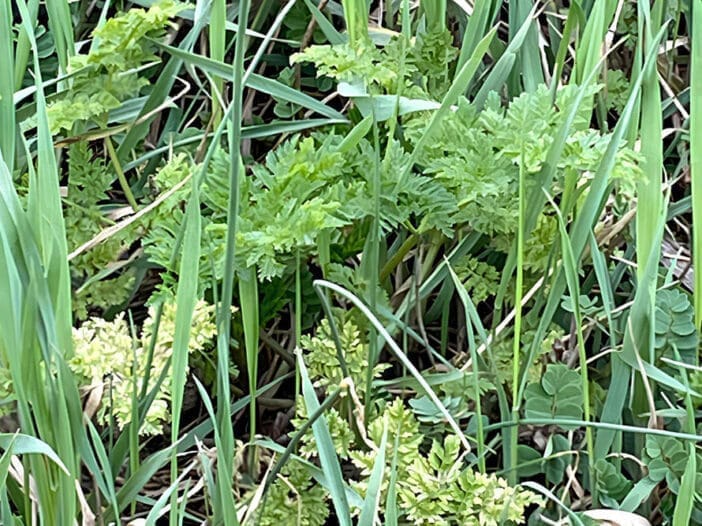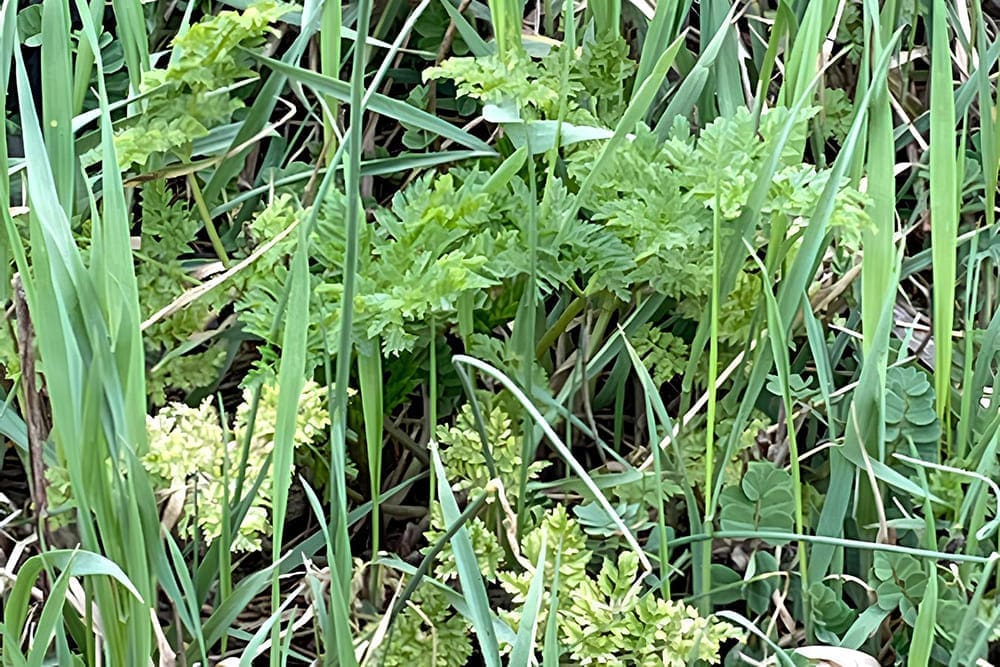

Poison Hemlock is a biannual weed of the parsley family, (not to be eaten, my friends) which can grow up to 6 feet tall and has a smooth, hollow stem. The weed can easily be identified by the purple spots on its stems and by its finely divided leaves which resemble wild carrot (also commonly referred to as Queen Anne’s lace – here, I always thought they were pretty flowers). Poison Hemlock has a musty smell, while the leaves often have a unique parsley smell when they are crushed. Being a biannual, seeds typically germinate in late summer through autumn. A small rosette forms which grows and may remain green throughout much of the winter. In early spring, the rosettes quickly green up and begin aggressively growing. Then in late May, the plant will bolt, shooting a single large stalk with small white flowers. After flowering, the seed plant will die, scattering new seed, which will germinate and produce new plants as fall approaches.
Where can I find it?
This weed has been expanding to new regions in the state, and its growth has become more aggressive. The weed can be found growing in fallow areas, fence rows, pastures, roadsides, and creeksides.
What is the history of Poison Hemlock?
Poison Hemlock is native to Europe, northern Africa, and western Asia and was introduced to North America as an ornamental garden plant. It is infamous as a poisonous plant. Hemlock tea reportedly killed the Greek philosopher Socrates in 399 BC. The plant contains a number of closely related pyridine alkaloids with the main one being coniine – a colorless, volatile, and strongly alkaline oil. All parts of the plant are poisonous, and some studies have shown toxicosis with consumption of 0.25% fresh weight (of the animal’s weight) for horses and 0.5% for cattle. This would be 2.5 to 5 lb. of fresh material per 1000 lb. animal. Mature seeds are the most poisonous. Significant poisoning can result in muscle paralysis and suffocation.
How do I get rid of it?
Identification and eradication of this plant wherever livestock could come in contact is important. Also, hayfields and meadows which will be harvested should be closely walked, eradicating hemlock prior to any harvest. The toxicity can remain when harvested with dry hay or baleage; therefore, do not feed contaminated hay. Additional help in identifying this poisonous plant can be found on Penn State Extension’s Factsheet on Poison Hemlock Identification.
Finally, care should be taken when eradicating the plant by wearing gloves and protective clothing. Contact with the skin has been known to cause irritation for some people. You can easily dig individual plants out using a shovel. For larger infestations, several herbicides are effective for control. Applications are most effective when made before plants bolt in the spring.
How can Silvis Group, Inc. help me?
Silvis Group has licensed Pesticide Applicators and the top-of-the-line herbicides to help you control and maintain an outbreak. Our team of experts will help by educating you and eradicating any problem areas that you may have. You can reach us by calling the office at 724-547-5268, or use our “Contact Us” section on our home page, and we will be happy to connect you with one of our team members.
Thank you to Penn State Extension for the basis of the information.


Leave a Reply